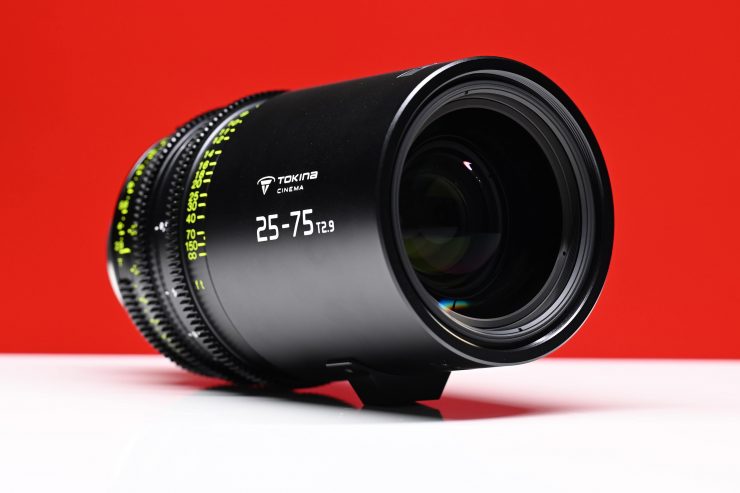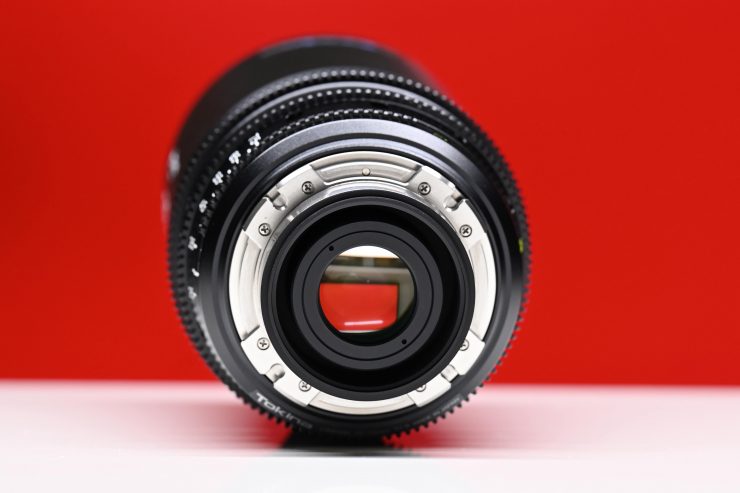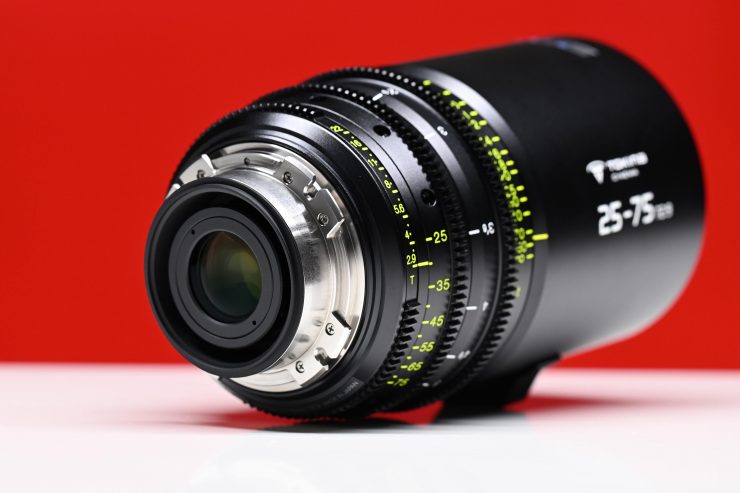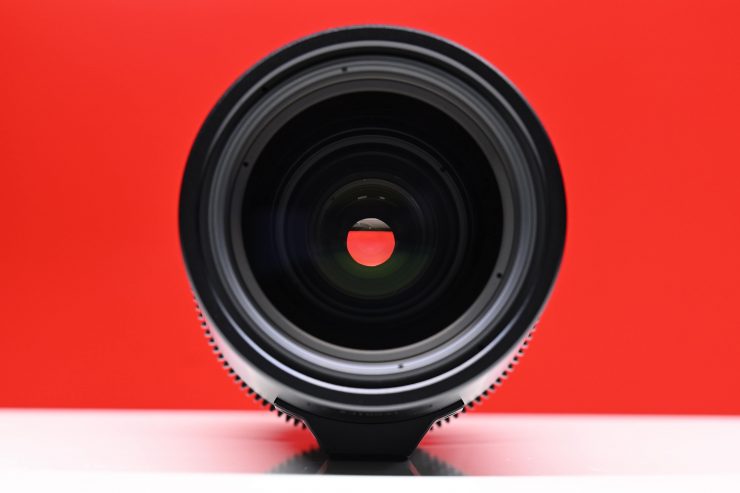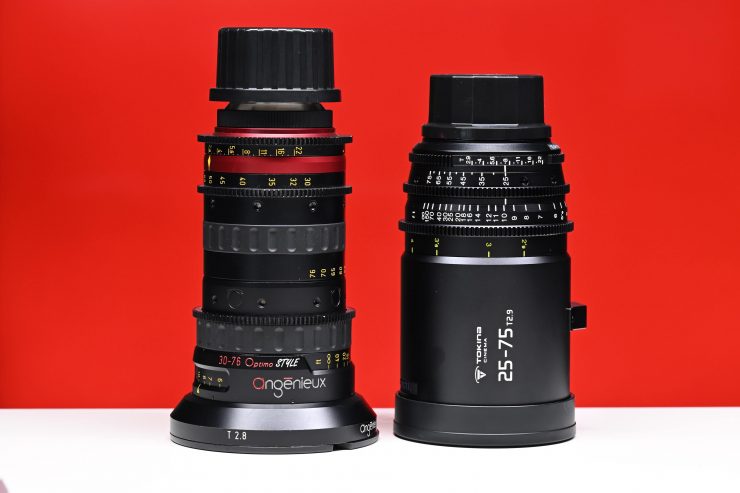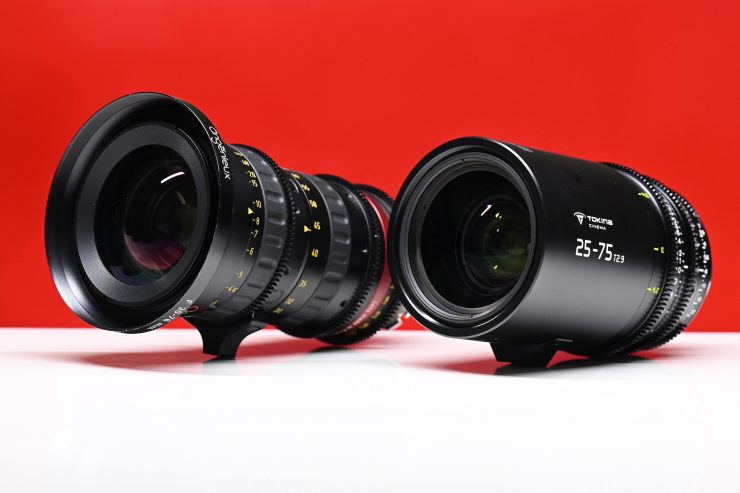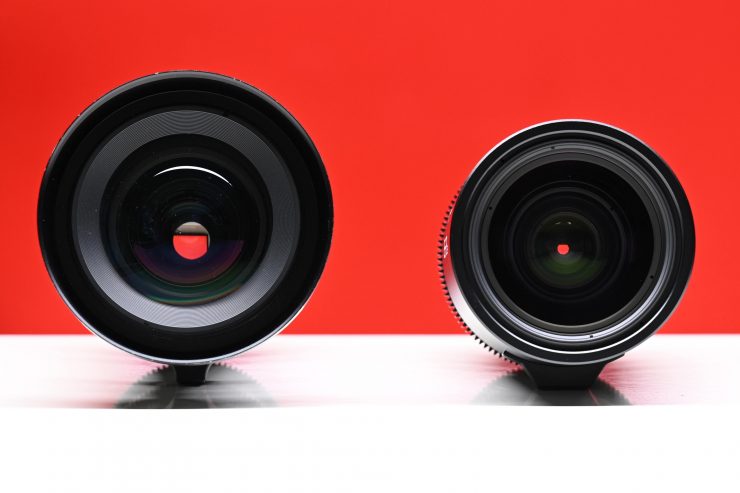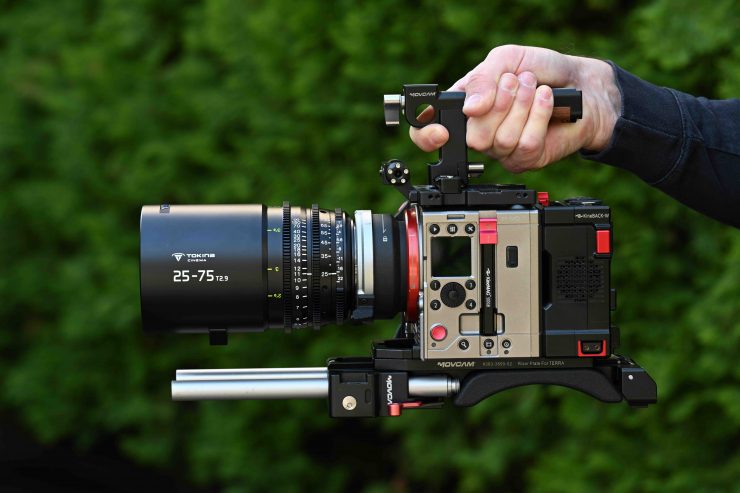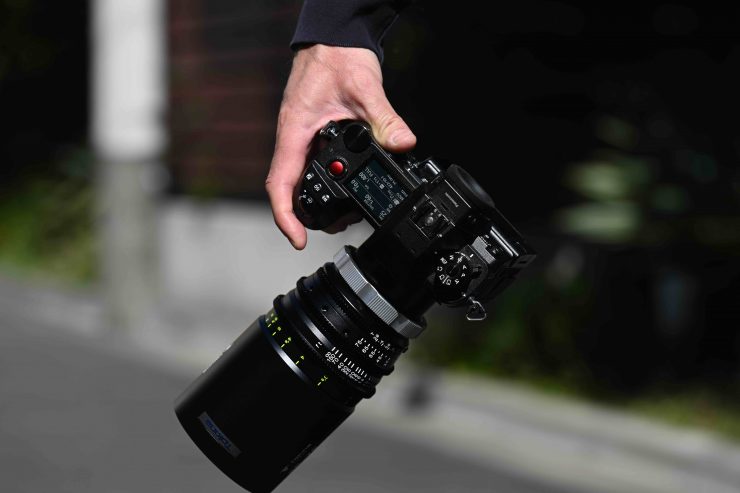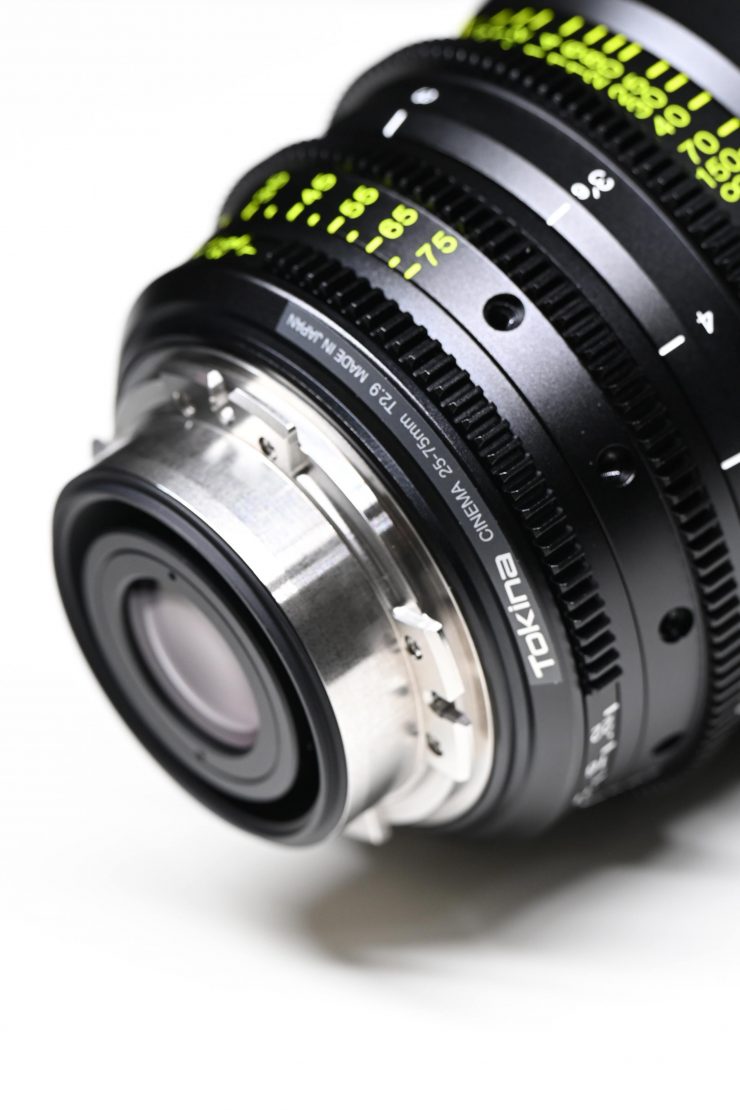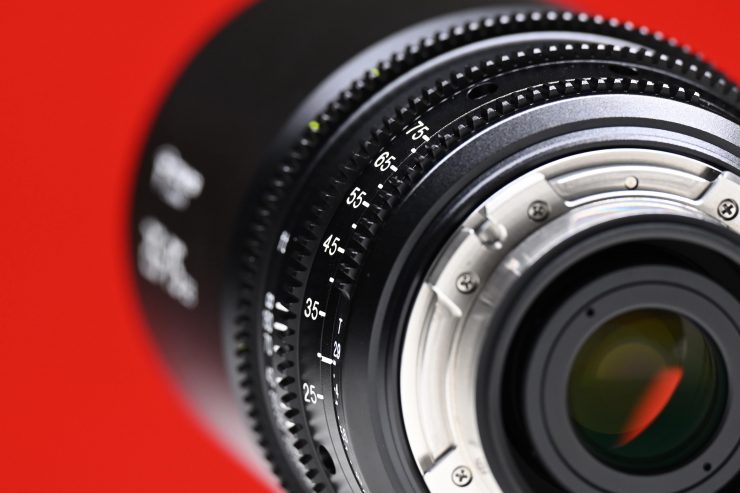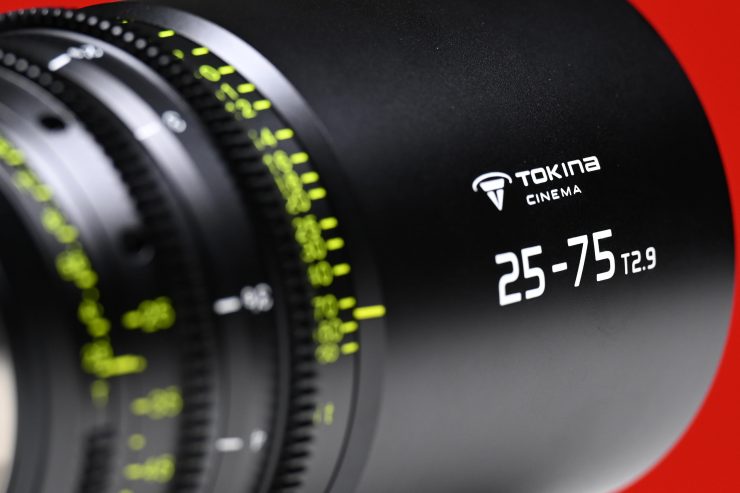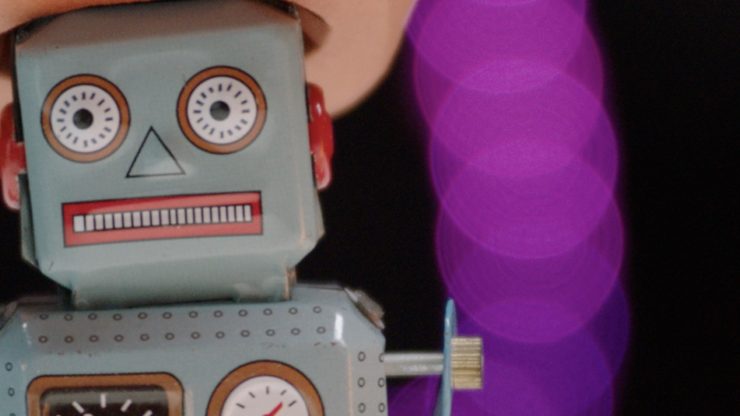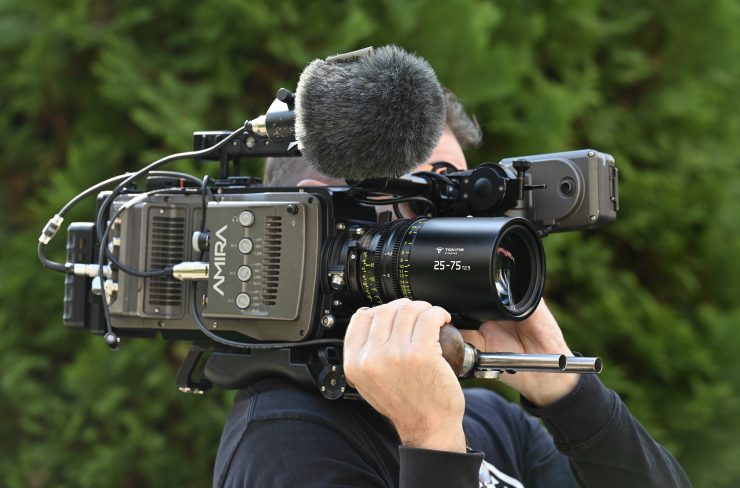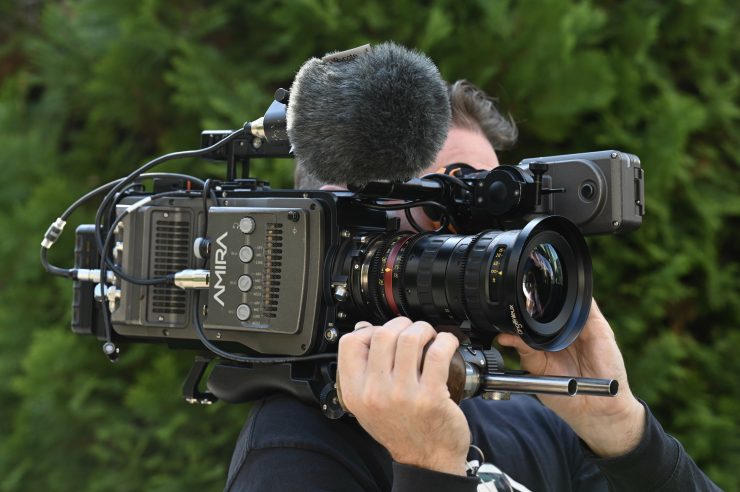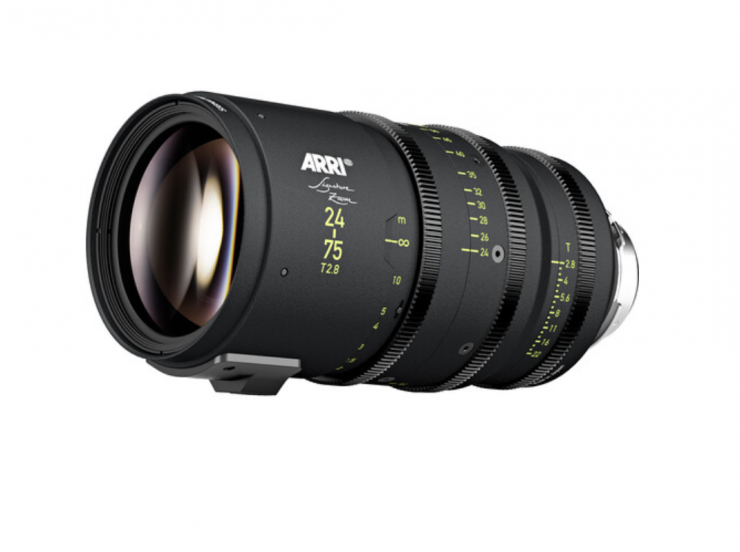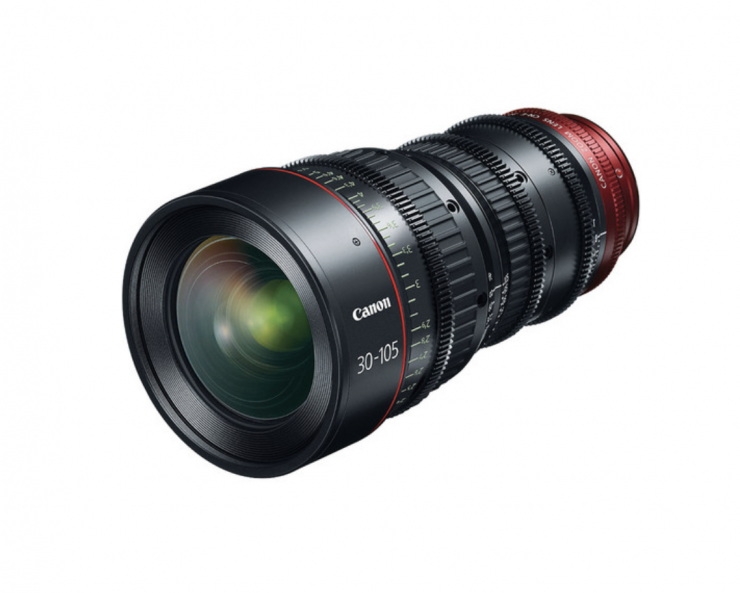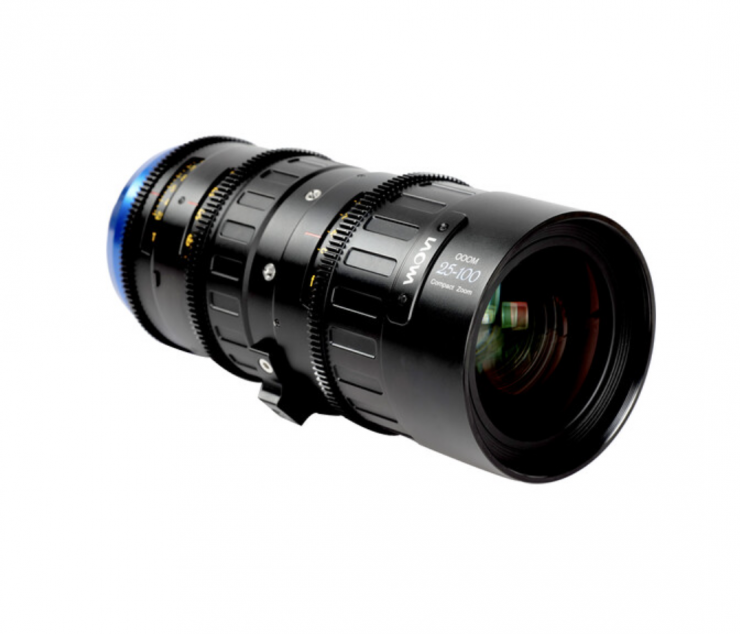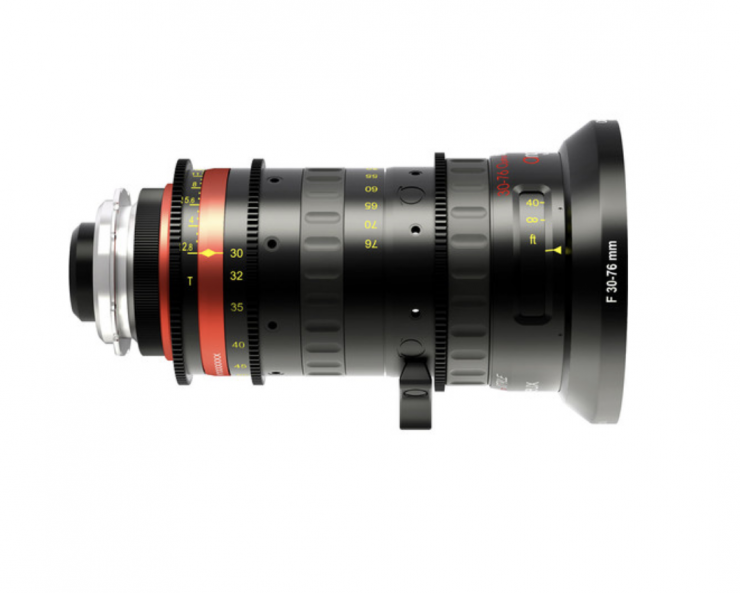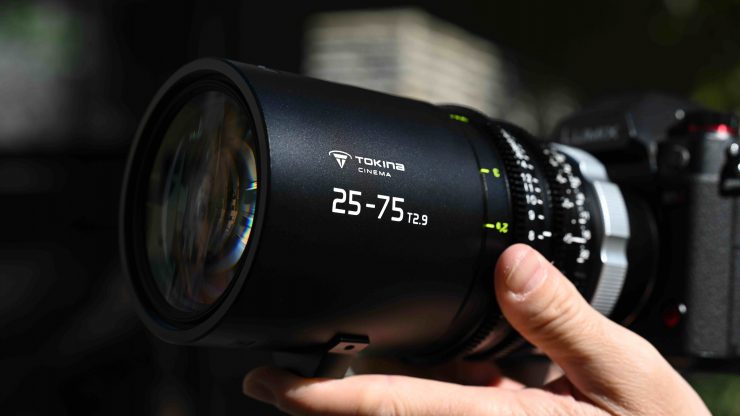
The Tokina Cinema 25-75mm T2.9 is part of a series of zooms that includes the 50-135mm T2.9 MKII and 11- 20mm T2.9.
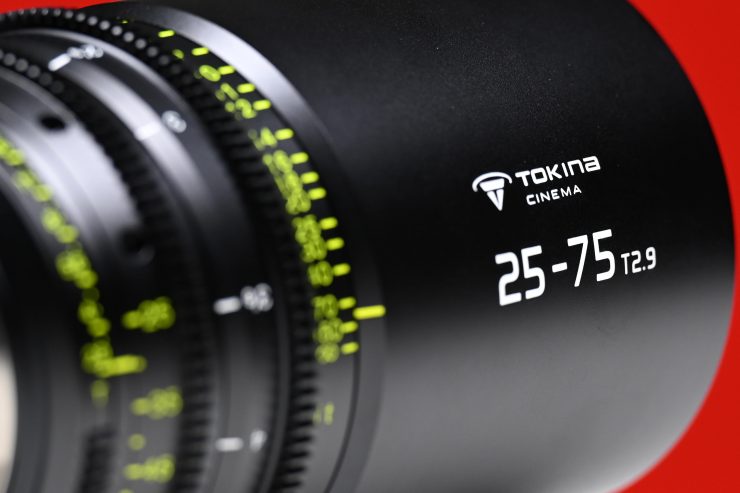
The 25-75mm T2.9 is designed to cover Super 35mm type sensors that have up to a 36mm image circle size. The larger 36mm image circle enables native coverage of RED Helium 8K, RED Dragon 6K, RED Monstro in 6K, Alexa LF and Mini LF in 4K UHD, as well as popular cinema and mirrorless cameras from Canon, Blackmagic Design, and Panasonic in 4K DCI or 4K UHD.
Tokina Cinema now has quite a comprehensive portfolio of zooms and primes and they are continually adding new lenses to their lineup.
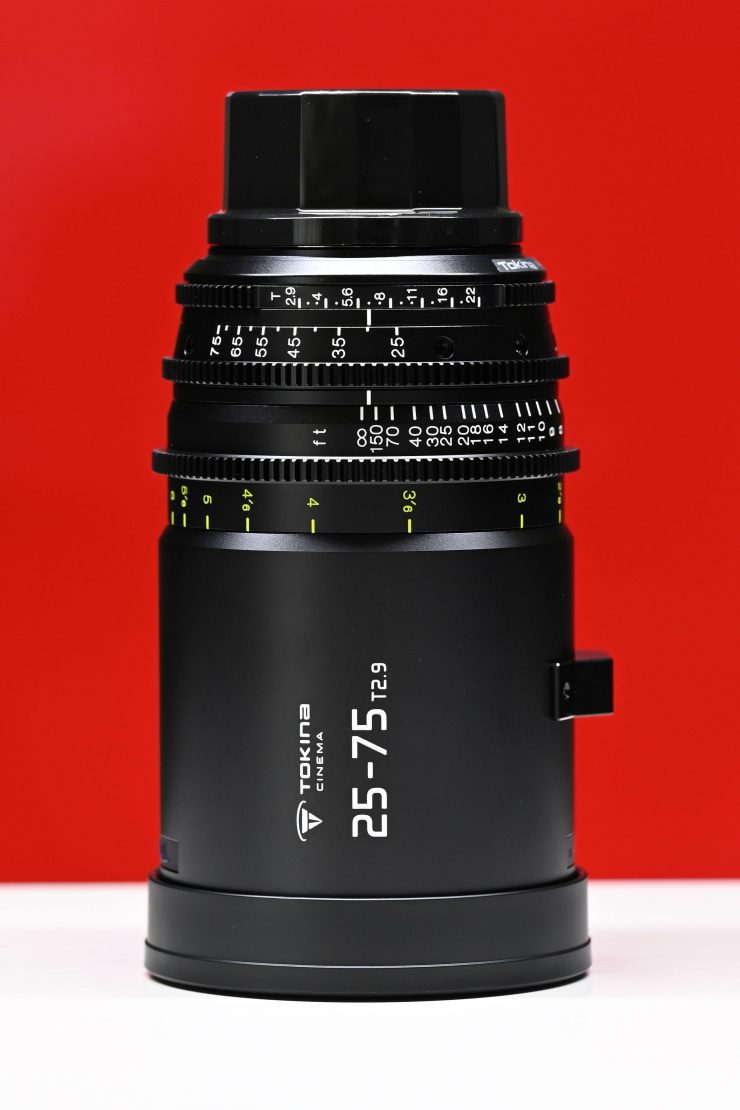
The 25-75mm features a true cinema design and it is not a rehoused stills lens. It has a compact 174mm overall length and industry-standard 0.8 MOD cinema gears.
Key features
- Constant T2.9 Aperture
- Matches 50-135mm T2.9 & 11- 20mm T2.9
- 0.8 MOD Focus, Aperture & Zoom Rings
- Clickless Aperture Ring
- Low Distortion
- 300° Focus Rotation
- 86mm Front Filter Thread
- 95mm Front Diameter for Matte Boxes
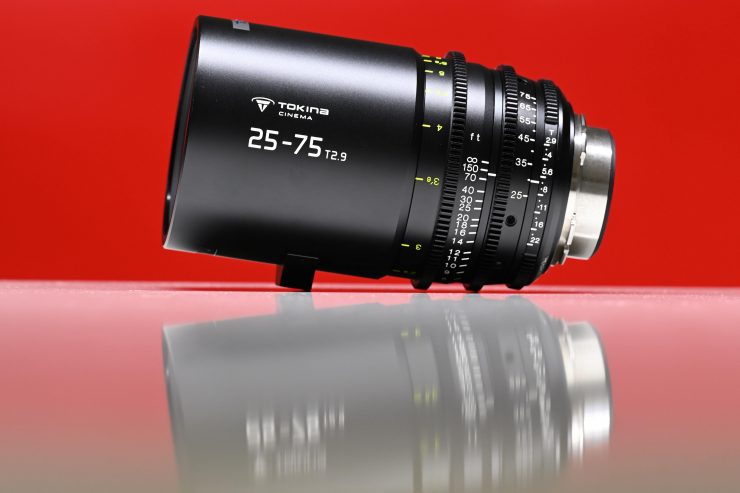
25-75mm might initially seem like a strange focal length for a lens that is meant for Super 35mm coverage, especially if you are shooting docs or factual content. It isn’t quite wide enough and it isn’t really long enough. However, if you own the 11-20mm (or 16-28mm) and the 50-135mm Tokina zooms, then this lens does certainly fill a gap.
Above you can see the zoom range the lens has. I am zooming using a lens motor.
I personally use a 30-76mm zoom that is a very similar length in combination with a 16-40mm and an 80-200mm.
For narrative or controlled situations, 25-75mm is a good focal range, however, that is not to say it can’t be used for documentary work.
Ok, now I am going to play the devil’s advocate. Yes, it is a useful range, but Super 35mm cinema zoom lenses are not nearly as popular as they used to be mainly because the industry is pushing full-frame and larger image capture. We have already seen Canon reduce the prices dramatically on two of their S35 cinema zoom lenses. The saving grace for the Tokina 25-75mm is that it does cover an image circle of 36mm so you can use it on several full-frame and larger sensors when shooting various resolutions.
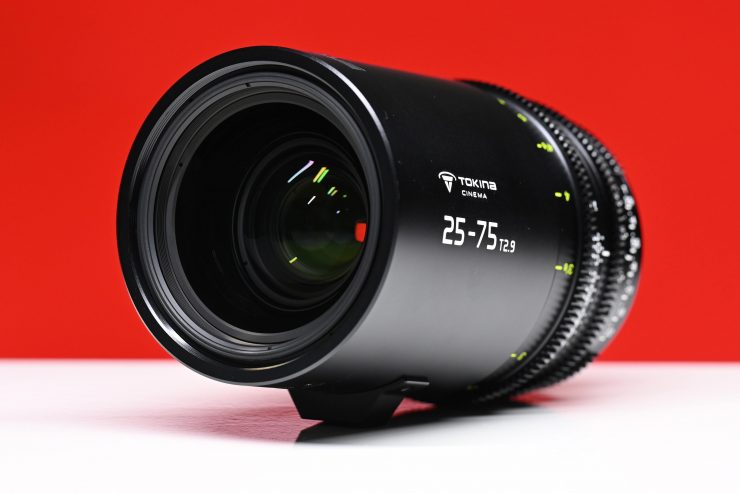
The biggest selling points for the Tokina Cinema 25-75mm T2.9 are that it features virtually no breathing, it has a 300-degree focus rotation, a constant aperture across its zoom range, and that it is relatively affordable.
Optical Design
The optical design consists of 15 groups and 18 elements. That’s a lot of glass! The minimum focus distance is 2.4′ / 74 cm and the lens has 9 aperture blades.
Size & Weight
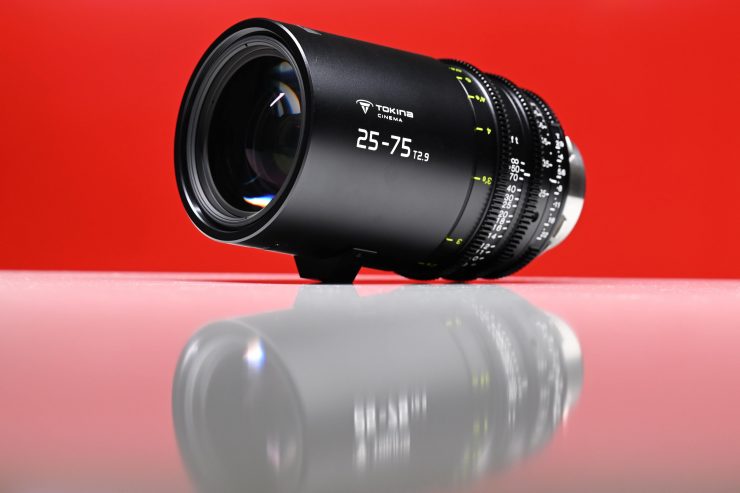
The 25-75mm T2.9 tips the scales at 1.96 kg / 4.32 lb in PL mount. This weight is pretty decent for a lens with this focal range and build quality.
In terms of physical size, the lens is 6.8″ / 173.5 mm long.
Above you can see how it compares in terms of overall size to the Angenieux 30-76mm T2.8 Optimo Style.
Some users may find the size and weight of the lens makes it a little heavy and awkward to use with some smaller-sized cameras.
Build Quality
The lens feels very solidly made and well constructed. The outside of the lens casing is a hard metal and it has been designed in a matte black finish to avoid light reflecting off it, however, is susceptible to marks and scratches.
The iris and focus rings are beautifully weighted and their operation is smooth. As I already mentioned, the focus rotation is 300 degrees, which is great if you are using a follow focus, but if you are pulling focus by hand you will find it difficult going from the minimum focus to the maximum focus point.
The zoom ring has quite a heavy damping and it does take more effort to move it than the iris and focus rings. This is fairly common with cine zooms because you don’t necessarily want to accidentally bump or have the focal range change by accident. In saying that, if you want to use the lens to suddenly crash zoom in, you will need to give it a decent turn to get from 25-75mm
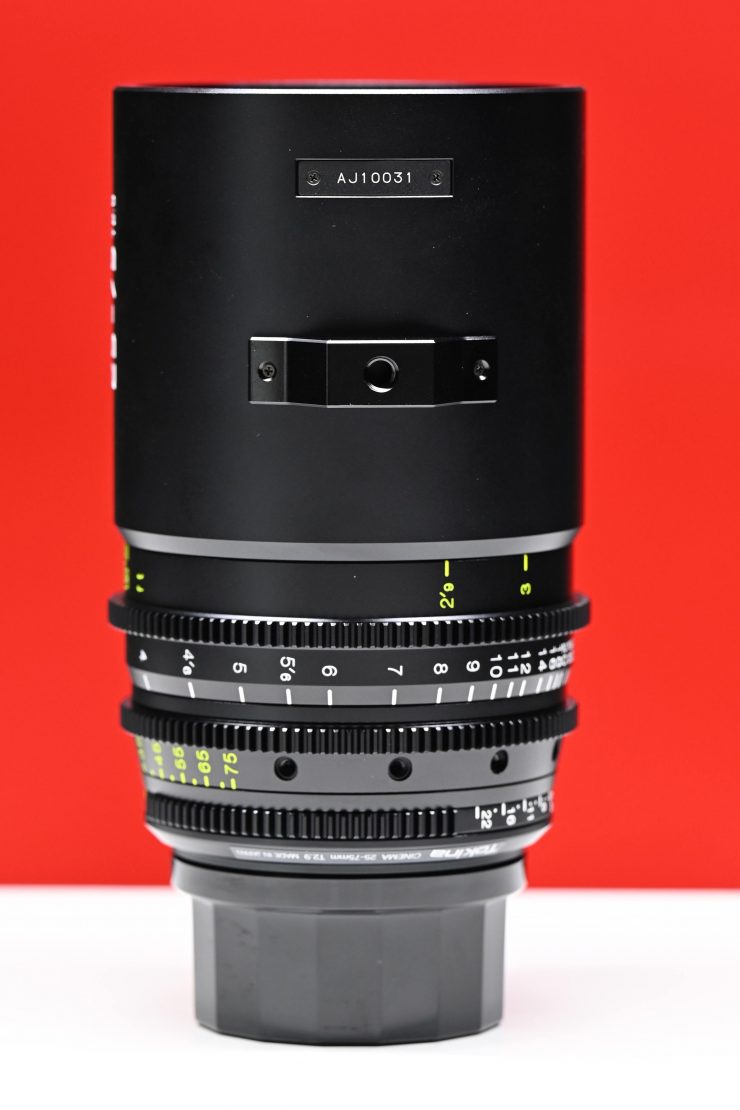
There is a built-in lens support adapter that takes a 1/4-20″ thread.
Markings
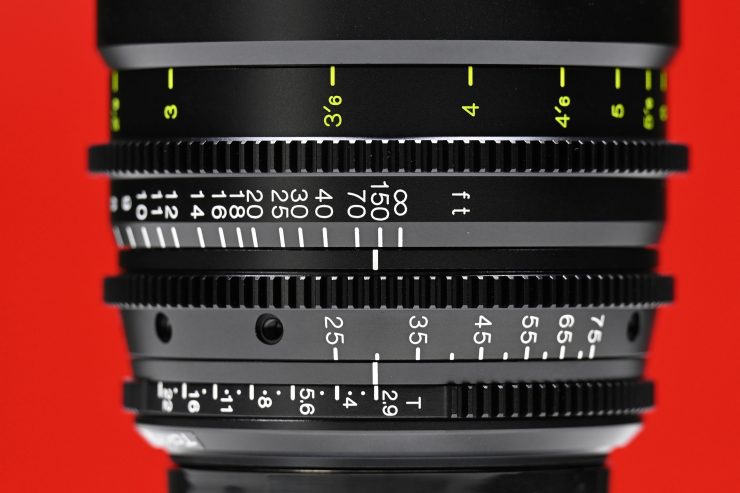
The 25-75mm T2.9, just like all of the other lenses in the series has clearly marked focus and iris scales on both sides of the lens. There certainly are a lot of markings and some cinematographers or camera assistants may think there are too many. What I did discover from going into rental houses here in Japan and talking to camera assistants and cinematographers who work here is that they actually like having lots of marking on lenses. As the lenses are made in Japan this is probably why there are so many markings.
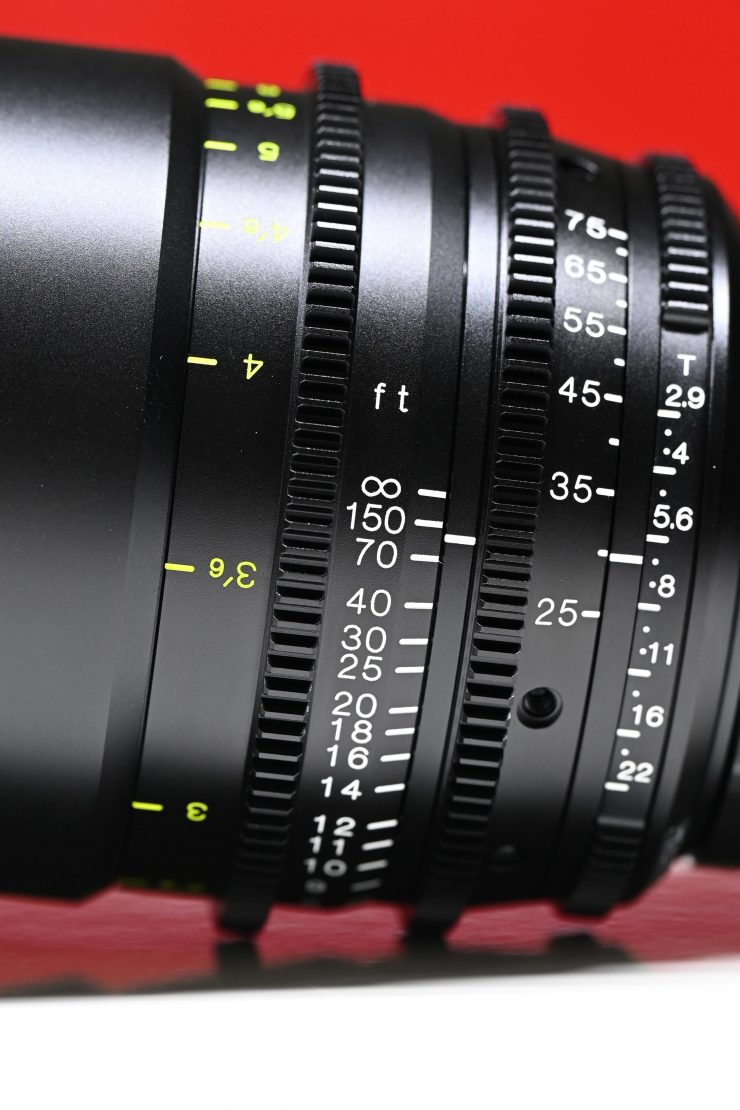
Operators side 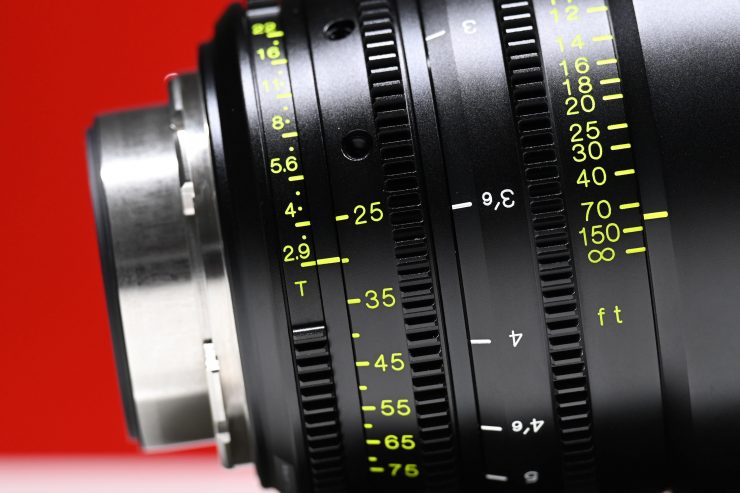
Camera assistants’ side
The markings are easy to read and can be seen on both sides of the lens. On the operator’s side, they are white in color, and on the camera assistants’ side, they are a fluoro yellow.
Mounts Available
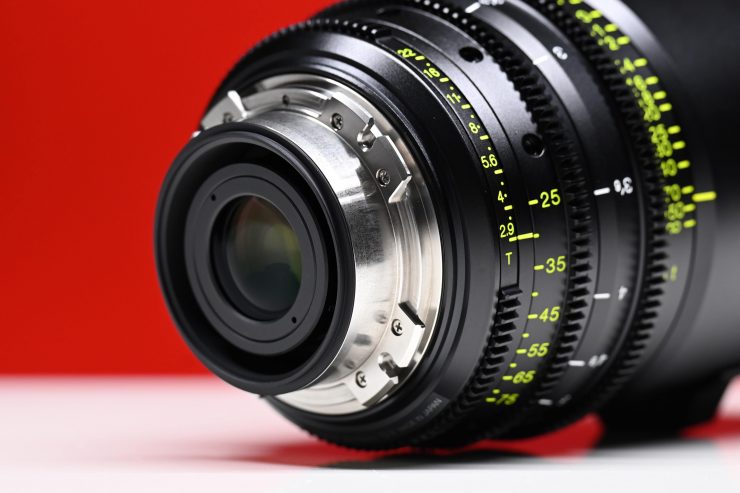
The lens is available in PL, Canon EF, M4/3, and Sony E Mount. The mount is changeable, but unfortunately, this is not something you can do yourself.
Tokina will offer its 1.6x expander for EF and PL versions of the lens that expand it to a 40-120mm T4 so that it covers Vista Vision.
The lens has a 95mm front diameter with an 86mm filter thread just like the 11-20 and 50-135mm lenses. It also features a parfocal design to retain focus while zooming and to provide limited focus breathing.
No Breathing?
I tested out the lens by doing large focus throws, and to my eye, there is a small amount of breathing, but it is very well contained. No lens technically has zero breathing, but very good cinema glass has such minimal amounts that it is virtually impossible to see. What you do see is some perspective shift which is normal when refocusing a lens.
Image shift is the change in location of a fixed point after a focus rack. It should be in the same spot after you rack focus.
Perspective shift is the focal length of the lens being modified by the movement of the optics. A slight change in focal length may happen if there is a floating element that moves and is not properly corrected for in the design. Certainly, the great majority of lenses have this issue. It’s also tenths of a mm so not overly noticeable.
Focus breathing is a change in image size so the size of the object will get larger as it moves out of frame. That is reproduction size.
In summary,
Fall off, Image Coverage & Vignetting
As the lens covers a 36mm image circle, when you use it on an S35 sized sensor you get very good illumination across the entire image.
I tried the lens on a Panasonic S1H and I found that it will cover both 4K and 5.9K full-frame modes. You do get some vignetting at 5.9K when the lens is at 25mm, but once you move to around 32.5mm it disappears. In 4K there is some slight edge vignetting.
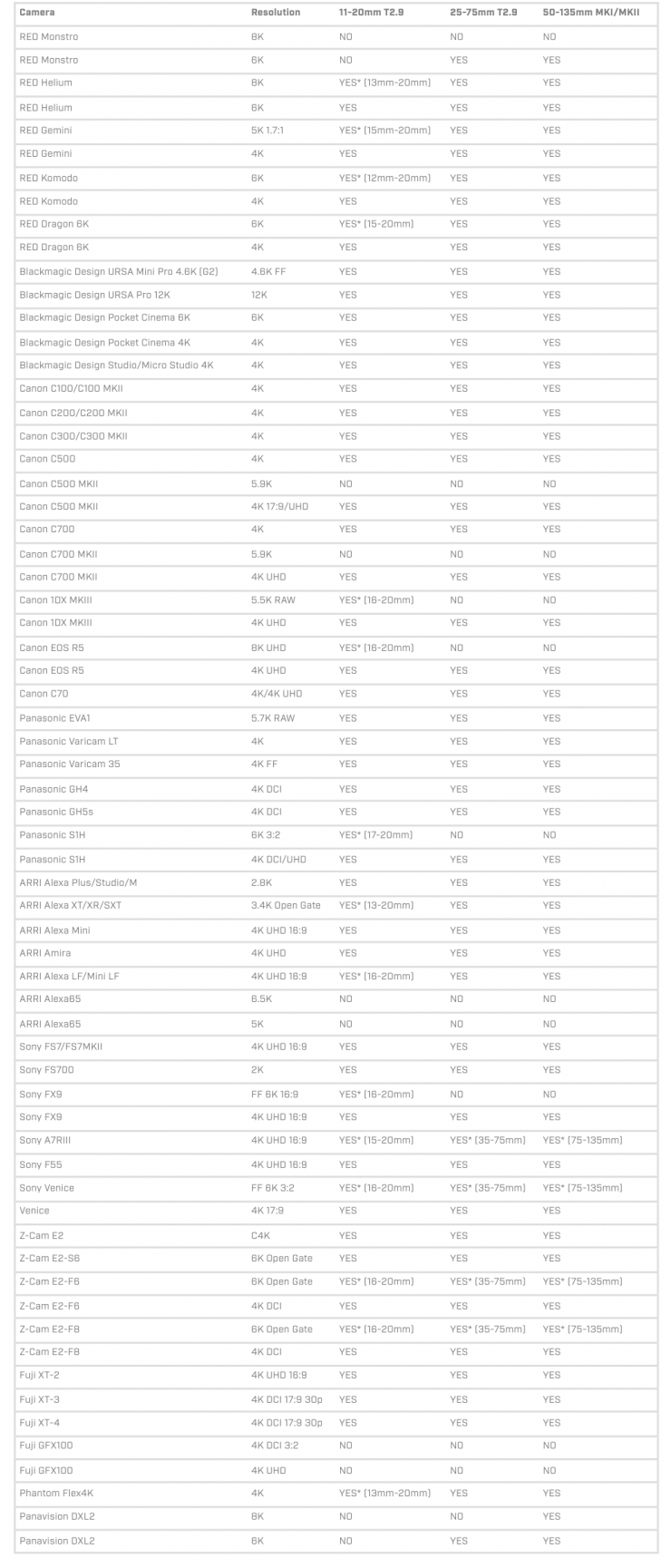
Above you can see what cameras and resolutions the 25-75mm T2.9 can be used with.
Sharpness
Tokina lenses are generally pretty sharp across the board, so how does the 25-75mm T2.9 fare? Above you can see how the lens performs when used wide open at T2.9 at 25, 35, 45, 55, 65, and 75mm. The lens retains pretty good sharpness across its focal range. It is sharp without being overly sharp. When I cropped in 300% I found that the lens actually looked to be at its sharpest around 50-55mm. Realistically, no one is going to crop a 4K image 300% for 4K delivery.
Ok, so now let’s look at the sharpness if we set the focal length to 75mm and start stopping the lens down. As you can see, the lens is still reasonably sharp when used at T2.9, but the sharpness does improve once you start stopping the lens down. T5.6-T8 is the sweet spot for sharpness on this lens.
Above you can see sharpness tests with the lens at 50mm. From my earlier tests, I found that the lens seems to be at its sharpest around 50-55mm, so I wanted to have a look a little more closely to see how it performed at various T stops at this focal length. On closer examination, the lens might be slightly sharper at 55mm, but there isn’t a lot in it. It certainly appeared to be sharper at T4 at this focal length than when I tested the lens at other focal lengths.
Overall, I found the sharpness of the 25-75mm T2.9 to be pretty good. It is sharp without being overly jarring in appearance.
Lens Flare
As you would expect with a modern lens design, the flare is very well contained, even when used wide open at T2.9. Stopping down does help in reducing lens flare, but regardless of what aperture you are using the lens still manages to maintain good contrast.
The lens isn’t too overly clinical when it comes to lens flare and you can get some interesting looks shooting directly into strong light sources.
Lens flare is very much a personal thing and whether you like the flares these lenses produce only you will know.
Chromatic Aberration
The lens doesn’t have any real-world visible chromatic aberration. If you zoom into the image by 300% when used wide open at T2.9 you can see some color fringing on bokeh circles and a very small amount on reflective surfaces and over-exposed areas, but that basically disappears once you stop the lens down a little bit.
Bokeh

Nice bokeh is something you want if you are purchasing a fast lens. The bokeh produced is reasonably nice and round and it looks fairly pleasing to the eye.
However, if you zoom in you can see that it does create onion rings within the out-of-focus highlights. This may or may not be distracting depending on how large the bokeh is, but it is something that you should be aware of.
The bokeh is not only round when used at wide-open apertures, but it also stays fairly round once you start stopping the lens down. You don’t get much of that “stop sign” looking bokeh.
Color Tone
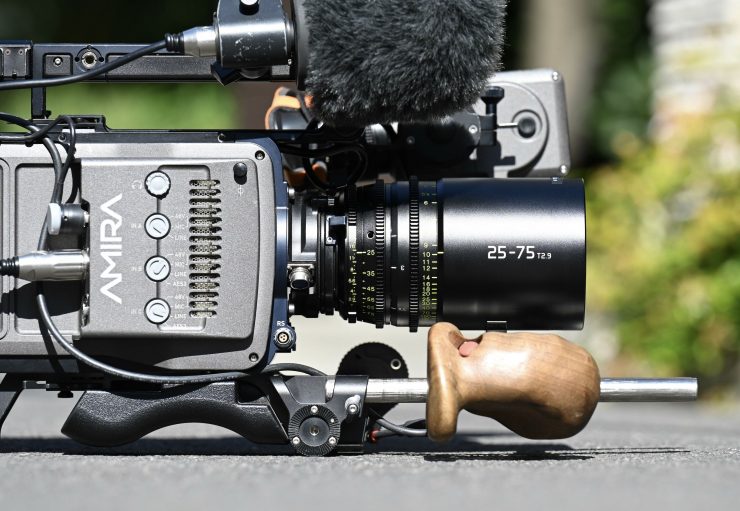
The Tokina Cinema zooms certainly lean more towards warm tones than say lenses from Zeiss. They have a nice amount of character and don’t appear too clinical and uninspiring. What look you actually prefer from a lens is entirely going to come down to personal choice. I really liked the warmer tones of the Tokina lenses, but that is just my personal opinion.
The color tone of a lens is really something you should look at closely if you are going to be using both prime and zoom lenses from different manufacturers. Certain prime and zoom lenses work better together than others. What will work for you will also depend on what camera you are using.
Real World Thoughts
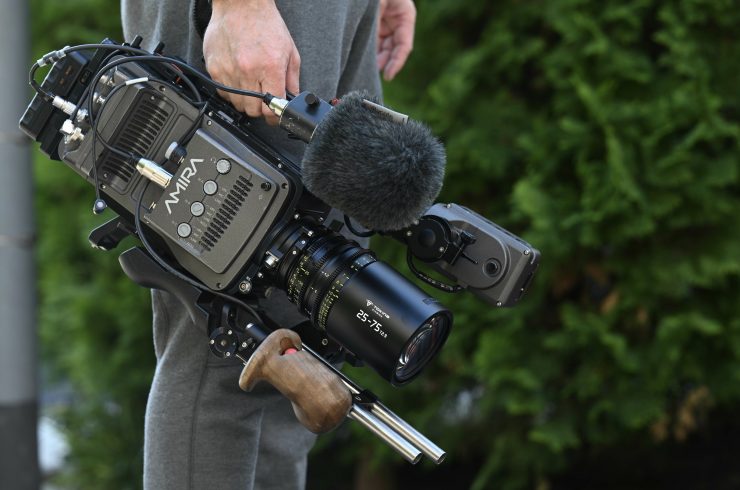
The 25-75mm T2.9 is a solid offering and it would be a good workhorse lens depending on what type of work you are doing.
The lens is really well made and a lot better than the first-generation Tokina cine zooms.
Above you can see how it compares to the Angenieux Optimo Style 30-76mm when shooting from the shoulder.
I wish I could have shot more content for this review but I have been busy doing my day job. I did use the zoom on a couple of projects, but I can’t currently show any of that footage.
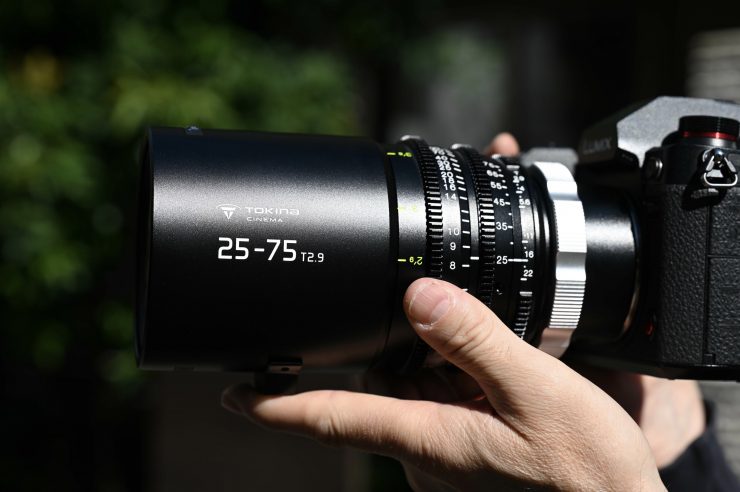
The optical performance of this lens is reasonably good, but it is far from perfect. It could perhaps be a little bit sharper and you do get ‘onion ring’ bokeh. In saying that, I found the level of sharpness to be just about right for my own personal tastes. On the positive side it does have reasonably nice flare, it has very little focus breathing, and it does have some character without being too sterile.
Price
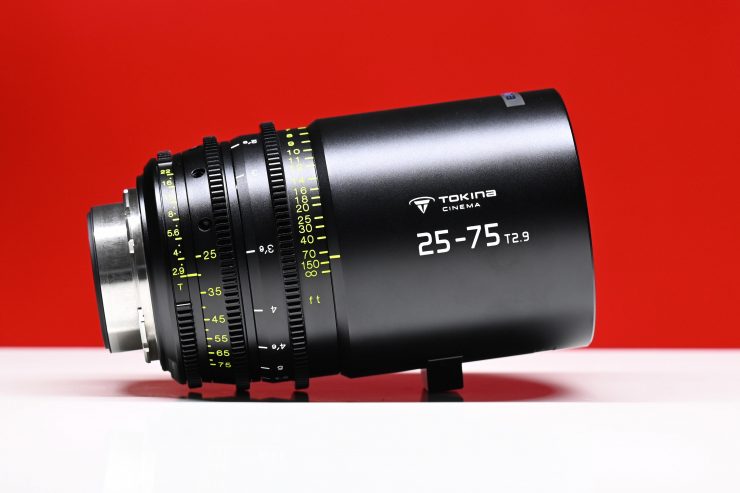
The Tokina Cinema 25-75mm T2.9 retails for $4,999 USD. I think this is a reasonably fair price given its optical performance, build quality, and image coverage.
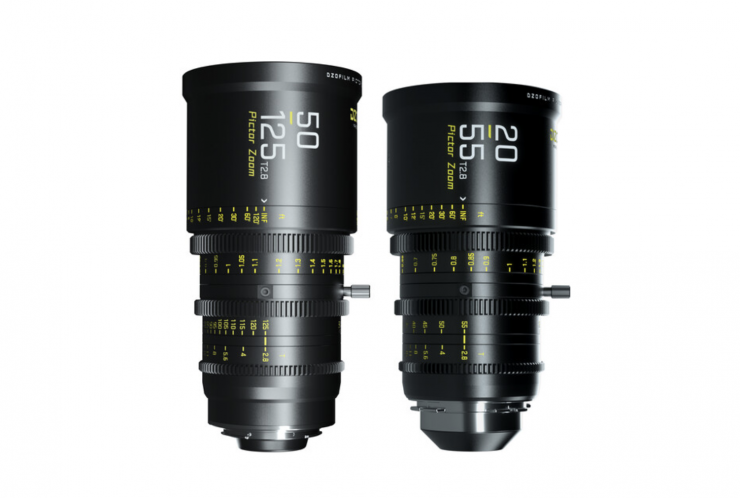
The Tokina does face stiff competition from more affordable options that have recently come to market. For the exact same money as the Tokina Cinema 25-75mm T2.9, you can buy the DZOFilm Pictor 20-55mm and 50-125mm T2.8 Super35 Zoom Lens Bundle.
Competition
There is a lot of competition when it comes to cine zooms. Numerous established brands such as Zeiss, Canon, Sigma, Cooke, Leitz Cine, Angenieux, Fujinon, and ARRI all make good zoom lenses. New players such as DZOFilm and Laowa also have some affordable options available. The prices of all of these zooms vary dramatically from just a few thousand dollars all the way up to well over $40,000 USD.
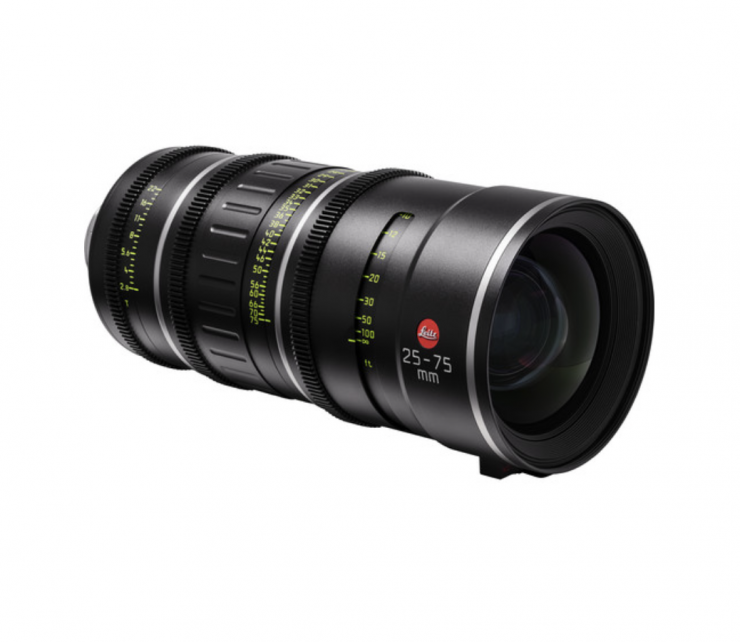
As far as cine zooms that have the exact same focal range, there is only the Leitz Cine Zoom 25-75mm T2.8. What you need to remember is that the Leitz covers a far larger image circle than the Tokina. So let’s compare the two lenses on paper:
| TOKINA 25-75mm T2.9 | Leitz Cine Zoom 25-75mm T2.8 | |
| IMAGE CIRCLE COVERAGE | 36mm | 46.5 mm |
| WEIGHT | 2.99 kg (6.59 lb) | 8.2 lb / 3.72 kg |
| LENGTH | 6.8″ / 17.3 cm | 10.5″ / 26.67 cm |
| IRIS BLADES | 9 | 15 |
| FRONT DIAMETER | 95mm | 114mm |
| FRONT FILTER THREAD | 86mm | 112mm |
| MFD | 2.4′ / 74 cm | 3′ / 90cm |
| INTERCHANGEABLE LENS MOUNT | Yes | No |
| PRICE | $4,999 USD | $51,000 USD |
Please remember that the Leitz costs 10x more than the Tokina.
| TOKINA 25-75mm T2.9 | Angenieux 30-76mm T2.8 Optimo Style Zoom | |
| IMAGE CIRCLE COVERAGE | 36mm | 31.4 mm |
| WEIGHT | 4.32 lb / 1.96 kg | 4.19 lb / 1.9 kg |
| LENGTH | 6.8″ / 17.3 cm | 7.32″ / 18.6 cm |
| IRIS BLADES | 9 | N/A |
| FRONT DIAMETER | 95mm | 114mm |
| FRONT FILTER THREAD | 86mm | None |
| MFD | 2.4′ / 74 cm | From : 2′ / 60cm |
| INTERCHANGEABLE LENS MOUNT | Yes | No |
| PRICE | $4,999 USD | $17,699 USD |
The S35 lens that I own and can directly compare to the Tokina to is the Angenieux 30-76mm T2.8 Optimo Style Zoom. Above you can see how it compares to the Tokina on paper.
Other similar focal length options include the DZOFilm Pictor 20 to 55mm T2.8, ARRI 24-75mm T2.8 Signature Zoom, Canon CN-E 30-105mm T2.8, Laowa OOOM 25-100mm T2.9, and the ZEISS 21-100mm T2.9-3.9 Lightweight Zoom LWZ.3. The Canon and the Zeiss give you an extra 25mm on the long end, while the Zeiss also gives you another 4mm on the wide end.
Do you need a full-frame cine zoom?
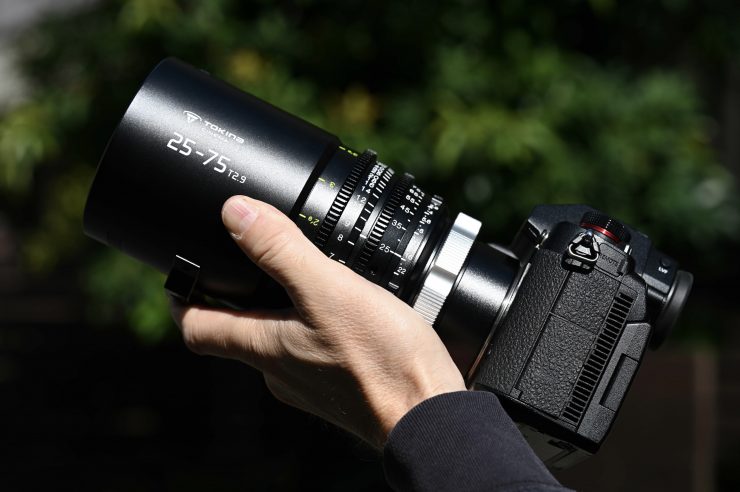
Let’s face it, a lot of us are not shooting on the RED DSMC2 Monstro 8K VV, or an ARRI ALEXA Mini LF, although in saying that, there are now quite a few affordable full-frame digital cinema cameras such as the Canon C500 Mark III, Sony FX9, Kinefinity MAVO LF, and the Z CAM E2-F6 Full-Frame 6K and 8K.
There is certainly a push by manufacturers to bring out full-frame and larger digital cinema cameras, so lenses that cover full-frame and larger sensors are going to become more popular.
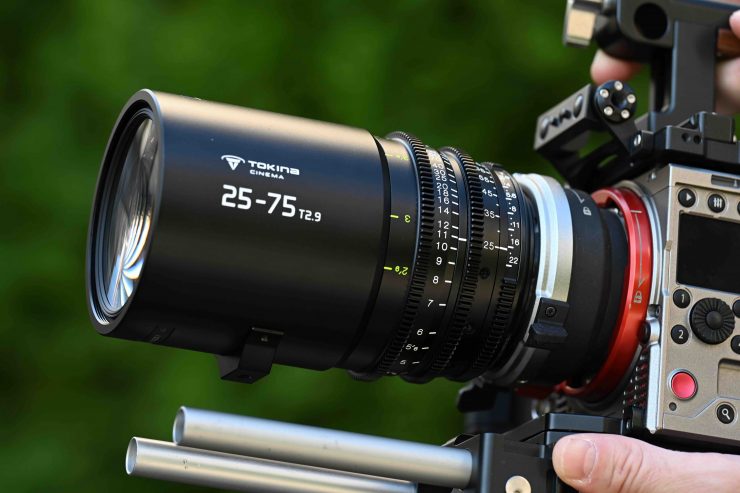
I don’t generally shoot on a full-frame digital cinema camera, but I have still chosen to invest in full-frame prime lenses. I did this because the industry is moving quickly and I would prefer to spend my money on something that is going to be slightly more future-proof than a lens that just covers an S35 sensor. In saying that, two of my main go-to cine zooms only cover S35 sensors. I personally prefer S35 zooms because they are significantly lighter and more affordable than cine zooms that cover full-frame and larger sensors.
If you do happen to own a full-frame camera system that can utilize the 1.6x expander with the 25-75mm which turns it into a 40-120mm T4.
Investing in a full-frame lens is going to cost you a lot more money than buying one that just covers S35 sensors, and you need to factor that in when considering what to buy.
Conclusion
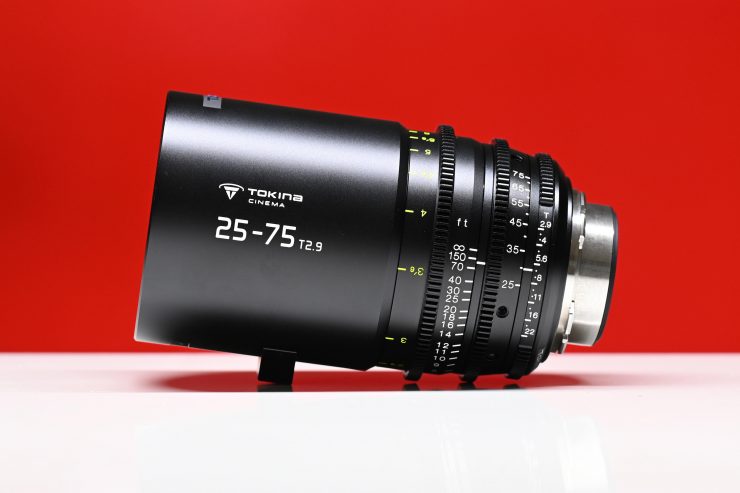
The Tokina Cinema 25-75mm T2.9 offers a good blend of image performance and build quality. People who have used any of Tokina’s more recent offerings will attest to how underrated their lenses actually are. You can’t take shortcuts with optical design and if Tokina had have opted to make the lens lighter and smaller they would have had to sacrifice image performance and the speed of the lens. You can’t have your cake and eat it too.
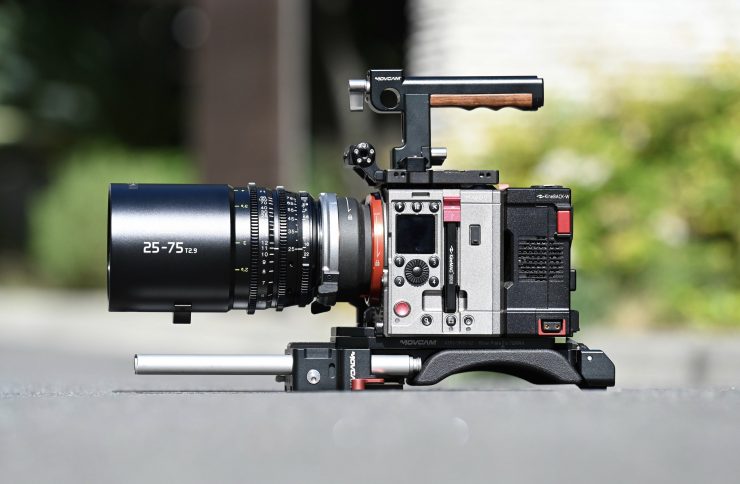
The lens is sharp without being overly sharp and it has very little chromatic aberration. Despite the ‘onion rings’ the bokeh is still fairly pleasing. There is no noticeable focus breathing and the mechanics of the lens are excellent.
The lens is reasonably large and heavy and you really do need to take those factors into account if you want to purchase one. This lens is squarely being aimed at mid to high-end owner/operators who require a decent zoom that won’t cost you a small fortune.
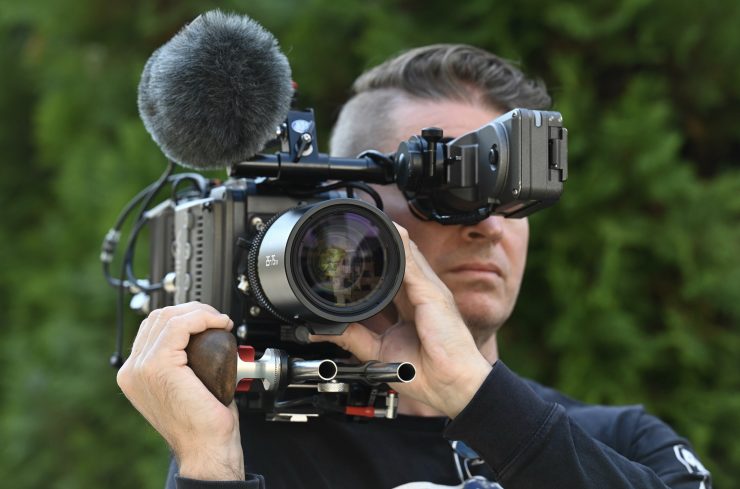
I enjoyed using the 25-75mm T2.8, however, it does face stiff competition from more affordable options that have recently come to market. I haven’t used or reviewed the DZOFilm zooms, so I have no idea how they actually perform.
Like what we do and want to support Newsshooter? Consider becoming a Patreon supporter and help us to continue being the best source of news and reviews for professional tools for the independent filmmaker.

